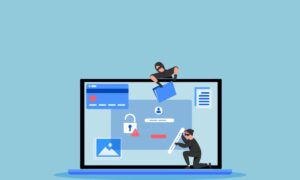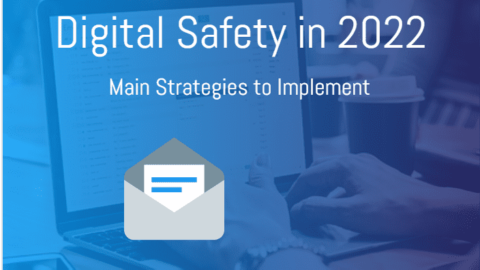Industries Most Vulnerable to Web Application Attacks
Years ago, web attacks included mostly phishing scams and malicious viruses. But over time these have evolved to include more sophisticated techniques such as SQL injection and cross-site scripting. Web application attacks and their techniques have become increasingly difficult to detect and countermeasure, leading to a rise in the number of successful attacks. As a result, businesses and individuals must be aware of the different types of common web application attacks and their potential impacts. So, how to avoid web application attacks?
Table of Contents
Web application attacks have become a concern for organizations from all industries. These attacks, launched by threat actors, can result in the theft of sensitive information, the disruption of business operations, and significant financial losses.
Some industries are more vulnerable to these attacks than others due to the nature of their operations, the type of information they handle, and the security measures in place.
Industries that are Prime Targets for Web Application Attacks
- The financial services industry is a prime target for web application attacks. Because they handle the sensitive and valuable information. Such as credit card numbers, bank account information, and other financial data. The financial services industry is also subject to strict regulations, making it even more critical to protect against web application attacks.
- The retail and e-commerce industries are also vulnerable to web application attacks due to the sensitive information they handle. Such as customer credit card information, addresses, and other personal data. Threat actors can use this information to make fraudulent purchases or steal identities, resulting in significant financial losses.
- The healthcare industry is particularly vulnerable to web application attacks due to the sensitive and personal information it handles, such as medical records and personal health information. In addition, the healthcare industry is subject to strict regulations, making it critical to protect against web application attacks.
- Government and public sector, such as organs of state, are also vulnerable to web application attacks, as they handle sensitive personal data, financial information, and confidential government documents.
- The following are some of the reasons why educational institutions are a target:
Intellectual property developed on campus that has significant value.
Information personally identifiable to students and employees
Processing power available in a computer.
Higher education institutions are also characterized by high rates of employee and student turnover, which may lead to insufficient security of passwords and an increased vulnerability to social engineering attacks.
How can these common web application attacks be avoided?
To avoid web application attacks, businesses and organizations need to implement a comprehensive security program and follow best practices, such as:
Regularly patching and updating software is a crucial aspect of maintaining the security of web applications and websites. Software developers continuously discover and address vulnerabilities in their products, releasing updates and patches to fix them. These updates often include security, bug fixes, and performance enhancements that help keep software secure and functional.
Failing to install software updates and patches can leave a website or web application vulnerable to exploitation by attackers. As such, it is vital to keep all software up to date and to apply patches as soon as they become available.
In addition to updating individual software products, keeping the underlying operating system and other supporting software up to date is essential. An outdated operating system or software component can provide a backdoor for an attacker to exploit. Even if the primary software is fully patched.
Utilizing robust authentication methods refers to implementing strong and secure processes to verify the identity of a user or system before granting access to sensitive information or systems. This is a crucial aspect of information security. Because it helps to prevent unauthorized user access and protect against malicious attacks from threat actors.
Regular security assessments refer to systematically and thoroughly evaluating an organization’s security posture, systems, and networks. Security assessments aim to identify potential security vulnerabilities, assess the risk of exploitation, and implement appropriate mitigation strategies to reduce the risk of security incidents.
There are several types of security assessments that organizations can conduct for common web application attacks, including:
-
Vulnerability Assessment:
This involves identifying and prioritizing security vulnerabilities in systems, networks, and applications and determining the likelihood of exploitation.
-
Penetration Testing:
The process involves simulating an attack on a system or network to identify weaknesses exploitable by threat actors.
-
Risk Assessment:
This involves evaluating the potential impact of security incidents on a business or organization and determining the likelihood of those incidents occurring.
-
Compliance Assessment:
This involves evaluating the organization’s compliance with regulatory requirements, such as data privacy laws, and industry standards, such as ISO 27001.

In conclusion: Web application attacks summarized
Businesses and organizations are always vulnerable to attacks on web applications. Particularly in specific industries. Implementing strong security measures and following industry best practices could avoid web application attacks.
Security measures typically enable organizations to protect their data from financial losses. The theft of sensitive information can also be mitigated by reducing disruption of business operations and improving compliance.
To prevent data leakage, it is critical that organizations have clear visibility of what code is running on their websites and web services. Whether it is their own or from a third party. As far as third-party tools and codes are concerned, organizations must regulate the data they collect and share.
In the end, hackers are less likely to target certain sectors than flaws. The initial actions include doing routine software upgrades, enabling two-factor authentication, performing routine firm data backups, creating strong passwords, and maintaining high-quality antivirus software. Almost every sector faces some risk.

Magdalena Polka is a Business Solution Designer and an Information Technology / Project Management consultant and author with over 15 years of software development, management and project management experience.










